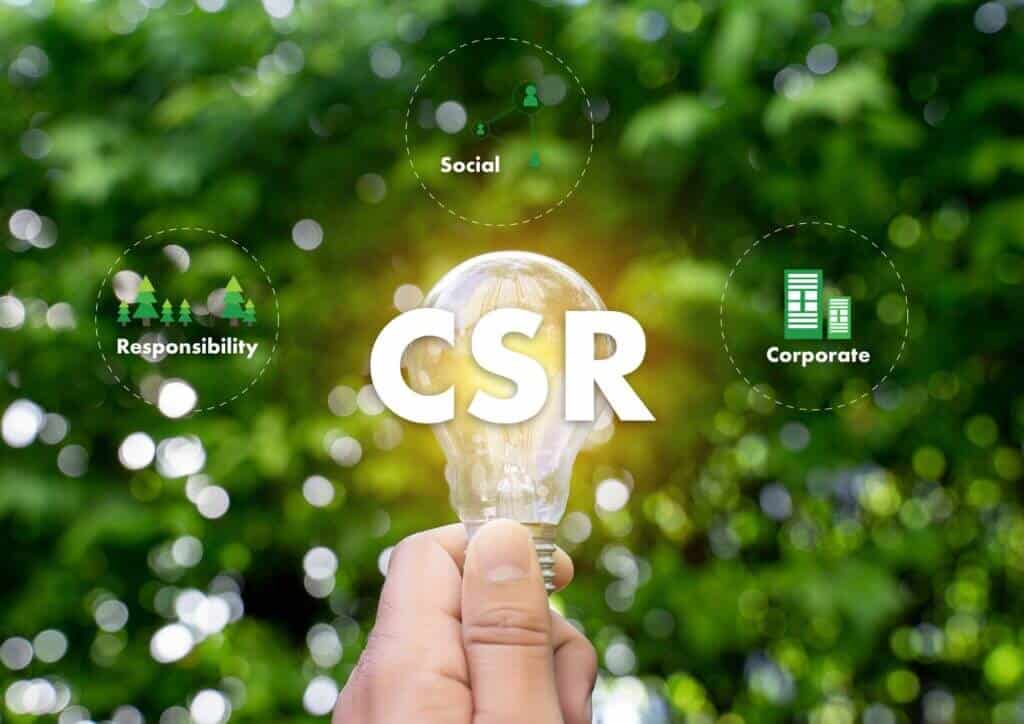Table of Contents
Sustainability
Sustainability is a significant idea that has recently attracted more attention. The need for sustainable practices has grown as the world’s population continues to rise. This article will examine sustainability, go through the numerous factors that need to be considered while working towards a sustainable future, and provide examples of sustainable practices that may be used. It will also discuss the differences Between Sustainability, Environmental sustainability, and Sustainable
The first definition of sustainability is “the creation and use of resources that fulfill the requirements of the present without jeopardizing the capacity of future generations to meet their own needs” (UNESCO, 2021). Sustainability, therefore, is about finding methods to make sure that the choices and actions we make now do not have a detrimental influence on the future. Given the current pace of resource depletion and the rising concern about how human activity affects the environment, this idea is crucial.
Several sustainability-related factors must be considered when attempting to create a sustainable future. Foremost, it’s crucial to encourage the use of renewable resources while reducing the usage of non-renewable ones. Using renewable energy sources, such as solar, wind, and hydropower, and promoting energy-saving techniques may help accomplish this. Second, establishing a sustainable future depends on decreasing waste and boosting recycling. This may be accomplished by advocating the 3R concept of recycling in sustainability, which include supporting the decrease of single-use plastics, encouraging the recycling and reuse of resources, and (reducing, reusing, and recycling). Third, it’s essential to promote sustainable agricultural methods. This involves encouraging sustainable irrigation techniques, crop rotation, and organic agricultural methods. Promoting sustainable consumption habits is crucial, too. This entails encouraging environmentally friendly items, lowering animal products, and promoting purchasing things grown and manufactured nearby.
There are many instances of how sustainable practices may be put into effect. Businesses may lessen their influence on the environment, for instance, by implementing energy-efficient equipment, renewable energy sources, and waste reduction techniques. Using renewable energy sources is another way that governments can support sustainability. They may also encourage corporate environmental impact reduction and finance the research and development of renewable energy sources.
Individuals may also help promote sustainability by acting. This entails cutting down on animal products, using public transportation when available, decreasing energy use using energy-efficient equipment, and cutting waste by recycling and composting. And people may encourage sustainability by supporting companies and groups that adhere to sustainable business practices.
To sum up, sustainability is a crucial idea that must be considered while working for a sustainable future. When working toward a sustainable future, several sustainability-related factors must be considered, such as lowering the use of non-renewable resources, cutting waste, and supporting sustainable agricultural techniques. And there are other instances of how organizations, governments, and people have adopted sustainable methods. We can guarantee that future generations can satisfy their requirements by acting to promote sustainability.
Environmental sustainability
Environmental sustainability refers to an ecosystem’s capacity to maintain and grow its inhabitants while remaining healthy and balanced. It is a crucial aspect of contemporary existence since human civilization is becoming more dependent on ecosystems and natural resources for survival. Protecting and preserving natural resources, minimizing adverse environmental effects, and promoting sustainable practices across all facets of life are all included in environmental sustainability.
Sustainable development, which aims to fulfill current demands without sacrificing the capacity of future generations to meet their own, is strongly related to environmental sustainability. Three guiding concepts form the foundation of sustainable development: maintaining the use of natural resources, safeguarding and improving the quality of the environment, and addressing existing demands without sacrificing the capacity of future generations to address their own needs. For a society to satisfy its requirements without jeopardizing the capacity of future generations to do the same, sustainable use of resources and a healthy environment are both critical. These ideas are strongly related to environmental sustainability.
Environmental protection, which includes maintaining and repairing the environment via renewable resources, lowering pollution, and safeguarding biodiversity, is where the phrase “environmental sustainability” is most often employed. Environmental sustainability includes environmental protection as a critical component. It involves preserving ecosystems and species, safeguarding the air and water quality, and minimizing human activity’s effects on the environment. Sustainability in the environment also includes protecting natural resources. This involves preserving forests, wetlands, and other ecosystems to shield them from human activity and restoring ecosystems harmed.
The encouragement of eco-friendly behaviors and lifestyles is another component of environmental sustainability. This involves minimizing energy consumption by using energy-efficient appliances and lights, using renewable energy sources, such as solar and wind power, instead of fossil fuels, and reducing waste via reuse, recycling, and composting. To lessen the adverse effects of agriculture on the environment, sustainable agriculture employs sustainable techniques such as crop rotation, integrated pest control, and organic farming.
An essential component of the worldwide struggle against climate change is environmental sustainability. Reducing greenhouse gases is essential for sustainable development since they play a significant role in climate change and global warming. Through the Paris Agreement, which seeks to prevent global temperatures from increasing by over 2°C over pre-industrial levels by 2100, nations have promised to cut their emissions of greenhouse gases to achieve this goal. Countries must try to adapt to the impacts of a changing climate, such as rising temperatures, severe weather events, and rising sea levels, besides lowering emissions.
Sustainability in the environment is crucial for both the environment and human health. Unsustainable activities like deforestation, overfishing and pollution might increase your chance of developing lung diseases and water-borne illnesses, among other health problems. Degradation of the environment may also have detrimental effects on the economy by resulting in job losses and decreased productivity.
A comprehensive strategy is needed to ensure environmental sustainability since it is a complicated and linked subject. This involves lowering greenhouse gas emissions, protecting natural resources, and encouraging environmentally friendly behaviors. It also necessitates adopting economically and ecologically viable measures, such as using sustainable agricultural practices, renewable energy sources, and energy efficiency. Achieving environmental sustainability is crucial to building a society that is fairer and just for everyone.
Sustainable Development
Sustainable development is known as achieving human development objectives while preserving the environment and the resources required for the future. This idea has been around for a while. Still, as the world’s population has expanded and human activity has significantly influenced the environment, it has recently gained greater significance. To guarantee that everyone has a bright future, sustainable development aims to balance social justice, environmental preservation, and economic progress.
The principle behind sustainable development is that present societal requirement should be satisfied without compromising the capacity of future generations to satisfy their own needs. This idea has expanded to include several economic, environmental, and social concerns, including reducing poverty, protecting resources, and preventing climate change. Governments, corporations, and international organizations have adopted it to build a more just and sustainable society.
The United Nations has outlined several sustainable development goals (SDGs) to lead the world toward a more sustainable future. These objectives include ending hunger and poverty, ensuring everyone has access to clean water, enhancing education, and advancing gender equality. The SDGs aim to fight climate change, protect natural resources and energy, and reduce pollution. The SDGs are created with interdependence and mutual support in mind, so advancement in one area may aid advancement in other areas.
Being a complicated concept, sustainable development requires the cooperation of several parties, including corporations, governments, and civil society groups. Governments are crucial in advancing sustainability by creating policies and financial support for education, technology, and infrastructure. Businesses may contribute by creating more sustainable goods and services and investing in green technology like renewable energy. Organizations from civil society may assist by promoting more robust environmental protection and educating people about the value of sustainability.
A comprehensive strategy considering economic, environmental, and social factors is crucial for sustainable development. This implies that governments, corporations, and civil society groups must collaborate to achieve sustainable development objectives. Governments, for instance, may provide financial incentives to companies investing in renewable energy and environmentally friendly goods. Companies can also create new environmentally friendly technology and products. Organizations in civil society may assist by promoting improved environmental protection and spreading awareness of sustainability’s value.
And improved international cooperation is necessary for sustainable growth. International collaboration is crucial to solving global issues like resource depletion, pollution, and climate change. This implies that nations must cooperate in developing global solutions and pooling their resources and knowledge. For instance, nations may cooperate to create renewable energy sources and lower greenhouse gas emissions.
Sustainable development is a complicated idea that requires the cooperation of several parties. The demands of the present and future generations must be satisfied via cooperation between governments, corporations, and civil society groups. To solve global issues like climate change, international collaboration is also crucial. Governments, corporations, and civil society organizations may support the development of a more sustainable future by integrating economic, environmental, and social factors into their policy-making and investment decisions.
What is the difference between sustainability and sustainable development?
Sustainability means wisely using resources to preserve them for future generations. It is an expansive notion that considers the impact of our consumer habits, economic activity, and way of life on the environment and its resources. Sustainable development relies on economic growth to provide for human needs and protect the environment for future generations. To guarantee that development is both fair and environmentally sustainable, it is a process that combines economic, social, and environmental goals.
DESIO Training
If you enjoyed this post, join our free newsletter for more valuable content! Subscribe now for informative articles, service updates, downloadable guides, and more. Click here!




